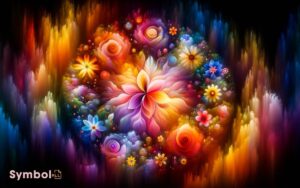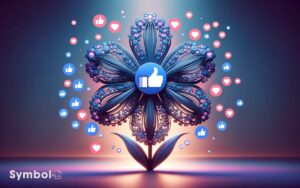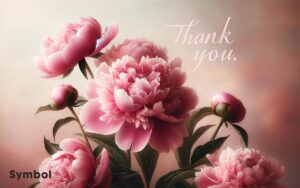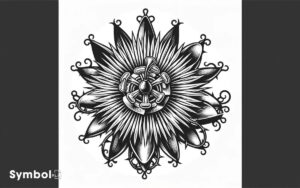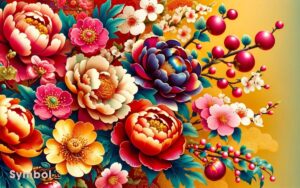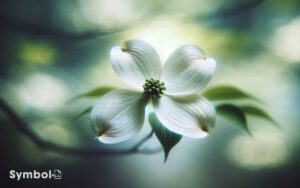What Does Blue Flower Symbolize? Serenity, Peace!
Blue flowers symbolize a myriad of profound emotions and concepts. You’ll find they embody serenity, peace, and dependability, illustrated by the complex chemical production of the rare pigment delphinidin.
This pigment, which reflects blue wavelengths, highlights the scientific marvel behind their alluring hues.
Additionally, their rarity mirrors the scarce nature of trust and unrequited love in human relationships, lending these blooms a unique significance in conveying steadfastness and melancholic longing.
Additionally, blue flowers stand as symbols of wisdom and enlightenment, inviting contemplation on life’s deeper meanings.
Understanding the intricate interplay of genetics, soil conditions, and cultural interpretations reveals even more layers to their allure, promising insights into the complexities of nature and human emotions.
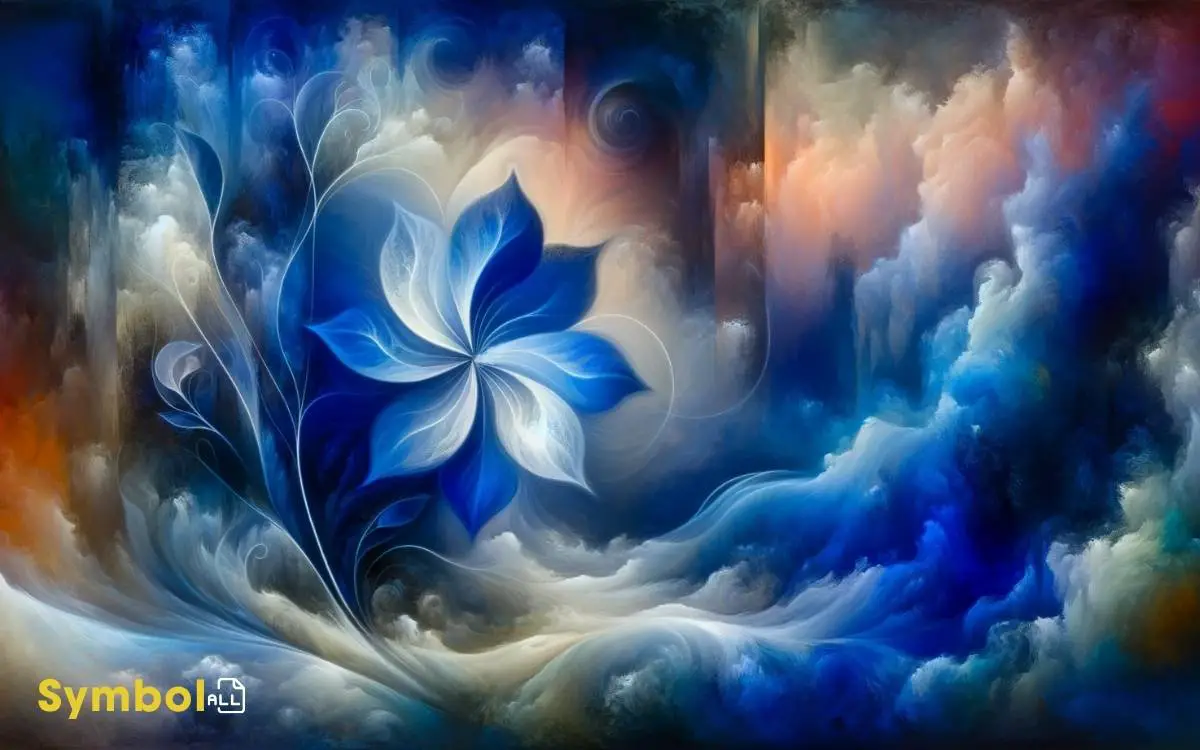
Key Takeaways
The Essence of Serenity
Blue flowers symbolize serenity, embodying calmness and peace through their hues and associations in various arenas. In the scientific domain, the rarity of naturally blue pigments in the plant kingdom underscores their unique significance.
Delphinidin, an anthocyanin pigment, grants flowers such as forget-me-nots and hydrangeas their distinctive blue coloration. This pigment’s absorption spectrum interacts with light in a way that reflects blue wavelengths, a phenomenon meticulously evolved.
The presence of acidic or alkaline soil conditions further modifies these hues, showcasing nature’s intricate chemistry. For you, understanding this interplay of genetics and environment enhances appreciation of blue flowers‘ serene beauty.
Their color not only soothes the eye but also invites a deeper contemplation of their biological and ecological intricacies.
Messages of Deep Trust
When communicating messages of profound trust, it’s essential to acknowledge that certain blue flowers, through their distinctive pigmentation and scarcity, signify dependability and assurance in interpersonal relationships.
The rarity of the blue hue in the floral world mirrors the rarity and value of trust in human connections.
Scientifically, the production of blue pigmentation in flowers involves complex chemical processes, which can be paralleled to the intricate development of trust between individuals. These flowers, by their very nature, embody the notion of steadfastness and reliability.
When you choose to convey trust through blue flowers, you’re not just offering a token of appreciation but are also making a profound statement about the depth of your commitment and the strength of your bond.
Symbols of Unrequited Love
You’ll find that the symbolism of unrequited love in blue flowers has its roots in literature, spanning across various epochs and geographies.
This association isn’t arbitrary but stems from nuanced cultural interpretations that have evolved over time.
Analyzing these symbols requires an understanding of both historical context and the specific emotional resonance they carry within different societies.
Roots in Literature
Throughout literature, blue flowers have symbolized unrequited love, serving as a poignant symbol in various narratives and poems.
This representation anchors in the unique coloration of blue flowers, which stands out in the natural world much like the singular focus of unrequited affection.
Scientific analysis reveals that the rarity of naturally blue pigments in the plant kingdom mirrors the elusive nature of reciprocated love in human experiences.
Literary works often employ this symbolism to evoke a deep sense of longing and melancholy. For instance, the use of the blue flower in Romantic poetry emphasizes the yearning for the unattainable, reflecting the poets’ introspective journeys.
This literary device engages readers’ emotions, allowing them to explore complex feelings of desire and loss through a scientific lens of botanical rarity and uniqueness.
Cultural Interpretations
Building on the literary roots of blue flowers as symbols of unrequited love, various cultures have imbued these blossoms with similar meanings, reflecting a universal sentiment in human relationships.
In Japan, the blue flower, often seen as a metaphor in their literature, signifies a longing for the unreachable and the hope for an unfulfilled love to be requited.
Scientifically, the rarity of naturally blue flowers in nature parallels the elusive nature of unrequited love, making them a poignant symbol across different societies.
Moreover, analysis of cultural rituals reveals that blue flowers frequently appear in ceremonies that honor love lost or unattained, illustrating a collective human experience. This cross-cultural symbolism underscores the complex emotions associated with love that remains unreciprocated.
Expressions of Wisdom
In the domain of botany, blue flowers symbolize wisdom, offering a unique lens through which to explore the complexities of human knowledge and understanding.
| Flower | Significance |
|---|---|
| Blue Lotus | Represents enlightenment and knowledge |
| Forget-me-not | Embodies true wisdom and respect |
| Bluebell | Symbolizes constancy and everlasting love |
| Cornflower | Denotes delicacy and a rich depth of thought |
These blue blooms serve as metaphors for the pursuit of insight and the depth of one’s intellect. They remind you that wisdom isn’t merely the accumulation of facts, but the delicate intertwining of experience, knowledge, and an understanding heart.
Delving into their meanings, you’re invited to reflect on the broader implications of wisdom in human culture, its transient yet impactful nature, and its role in fostering a deeper connection with the world around us.
The Mystery of the Impossible
Exploring the domain of the impossible, you’ll uncover phenomena that defy traditional scientific understanding and challenge our perception of reality.
Within this sphere, blue flowers hold a unique position. They’re rarities in nature, their vibrant hues stemming from specific genetic mutations and unique soil conditions.
This scarcity has led scientists to investigate further into the genetics of plant pigmentation, deciphering the complex interplay of genes responsible for the production of blue pigments.
Analyzing these flowers, you’ll find that they’re not just biological anomalies but also subjects of intense scientific inquiry.
Their existence pushes the boundaries of what’s considered possible in the natural world, inviting a reconsideration of our understanding of plant biology and the mechanisms of color production.
A Beacon of Inspiration
How do blue flowers serve as a source of inspiration across various domains of human endeavor, from art to science?
Their rarity and distinctive hue ignite creativity and symbolize the pursuit of the extraordinary. They’re not just plants; they’re muses that challenge our perceptions and encourage exploration.
- Artists harness their unique color to convey emotions and depth, transcending the ordinary.
- Scientists investigate their pigmentation and rarity, revealing secrets of genetics and biodiversity.
- Environmentalists view them as emblems of conservation, advocating for the preservation of their natural habitats.
- Writers and poets draw upon their symbolism to weave narratives of mystery, longing, and the pursuit of the unattainable.
In these ways, blue flowers aren’t merely botanical wonders; they’re catalysts for innovation, reflection, and discovery.
Conclusion
In weaving the tapestry of meanings behind the blue flower, you’ve journeyed through domains of serenity, trust, unrequited love, wisdom, impossibility, and inspiration.
Like a river meandering through diverse landscapes, each significance enriches the flower’s symbolism, offering a multifaceted view of its essence.
Through scientific scrutiny and detailed analysis, it’s evident that the blue flower isn’t just a botanical wonder; it’s a complex emblem that mirrors the depth and diversity of human emotions and aspirations.

